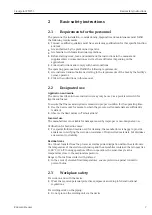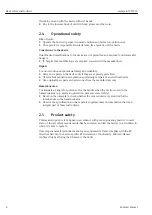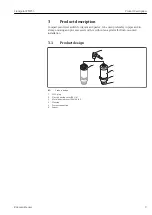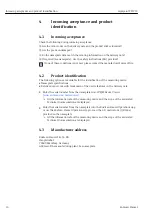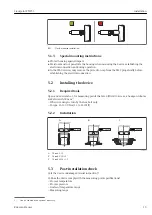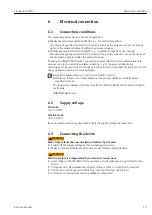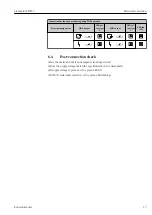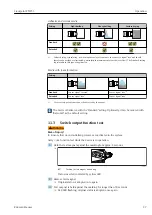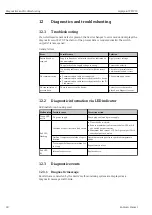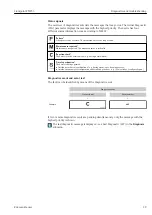
Liquipoint FTW33
Electrical connection
Hauser
15
6
Electrical connection
6.1
Connection conditions
The measuring device has two modes of operation:
• Maximum point level detection (MAX): e. g. for overfill prevention
The device keeps the electrical switch closed as long as the sensor is not yet covered by
liquid or the measured value is within the process window.
• Minimum point level detection (MIN): e. g. to protect pumps from dry running.
The device keeps the electrical switch closed as long as the sensor is covered by liquid or
the measured value is outside the process window.
Choosing the "MAX"/"MIN" mode of operation ensures that the device switches in a safe
manner even in the event of an alarm condition, e. g. if the power supply line is
disconnected. The electronic switch opens if the point level is reached, if a fault occurs or if
the power fails (quiescent current principle).
• IO-Link: Communication on pin 4; switch mode on pin 2.
• SIO mode: If there is no communication, the device switches to the SIO mode =
standard IO mode.
The functions configured in the factory for the MAX and MIN modes can be changed
via IO-Link:
HNO/HNC hysteresis
6.2
Supply voltage
SIO mode
10 to 30 VDC
IO-Link mode
18 to 30 VDC
IO-Link communication is guaranteed only if the supply voltage is at least 18 V.
6.3
Connecting the device
L
WARNING
Risk of injury from the uncontrolled activation of processes!
‣
Switch off the supply voltage before connecting the device.
‣
Make sure that downstream processes are not started unintentionally.
L
WARNING
Electrical safety is compromised by an incorrect connection!
‣
In accordance with IEC/EN61010 a separate circuit breaker must be provided for the
device.
‣
Voltage source: Non-hazardous contact voltage or Class 2 circuit (North America).
‣
The device must be operated with a fine-wire fuse 500 mA (slow-blow).
‣
Protective circuits against reverse polarity are integrated.







